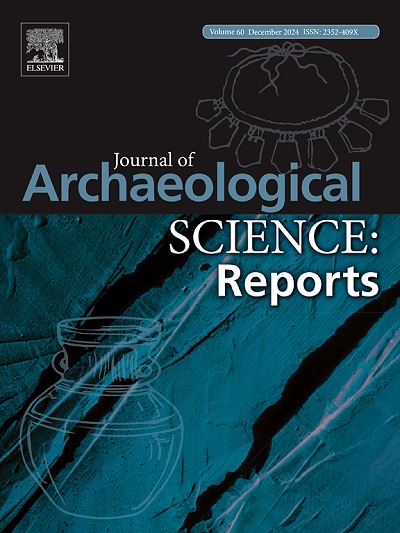Early Islanders: Neolithic pottery from Soline, island of Korčula (Croatia)
IF 1.5
2区 历史学
0 ARCHAEOLOGY
引用次数: 0
Abstract
The Late Neolithic period in the Eastern Adriatic was characterized by the emergence of settled communities along the coast and on the islands, including Soline, a Hvar culture site off the north-eastern coast of the Island of Korčula (Croatia). This open-air coastal site with stone architecture contrasts with preferentially preserved cave-sites, providing an opportunity to gain further insight into the organization and interactions of these seafaring communities during this period. The present study aims to ascertain whether this island community was producing their own pottery and if so, to reconstruct their technological choices. This has been carried out through a combination of ceramic petrography, X-ray diffraction (XRD), scanning electron microscopy (SEM) and portable X-ray fluorescence spectroscopy (pXRF) analysis of sherds recovered from the site. Geochemical and petrographic analysis revealed two distinct pottery traditions—both consistent with local raw materials though with different tempering practices, forming techniques, and firing conditions—while also identifying evidence of marine post-depositional alteration. Most of this assemblage was characterized by coarse calcite temper, with two untempered sherds resembling coarse figulina wares generally associated with the Danilo Culture. The analysis of the present samples suggests the local production of pottery, with material and technological similarities to vessels found elsewhere in Dalmatia. This fits the interpretation of Soline as a permanently occupied site that was part of a larger regional tradition, though future analysis of material from Soline will provide further insight into its role and interactions in Neolithic Dalmatia.
早期岛民:来自kor乌拉岛(克罗地亚)索林岛的新石器时代陶器
东亚得里亚海新石器时代晚期的特点是沿海和岛屿上出现了定居社区,包括位于kor乌拉岛(克罗地亚)东北海岸外的赫瓦尔文化遗址索林。这个石制建筑的露天海岸遗址与优先保存的洞穴遗址形成鲜明对比,为进一步了解这一时期这些航海社区的组织和相互作用提供了机会。本研究旨在确定这个岛屿社区是否在生产自己的陶器,如果是的话,重建他们的技术选择。这是通过结合陶瓷岩石学、x射线衍射(XRD)、扫描电子显微镜(SEM)和便携式x射线荧光光谱(pXRF)对现场回收的碎片进行分析来进行的。地球化学和岩石学分析揭示了两种截然不同的陶器传统——它们都与当地的原材料一致,尽管有不同的回火方法、成型技术和烧制条件——同时也发现了海相沉积后蚀变的证据。这种组合的大部分特征是粗糙的方解石回火,有两个未经回火的碎片,类似于粗糙的铜器,通常与达尼洛文化有关。对现有样本的分析表明,陶器是当地生产的,其材料和技术与达尔马提亚其他地方发现的器皿相似。这符合Soline作为一个永久居住的遗址的解释,它是一个更大的地区传统的一部分,尽管未来对Soline材料的分析将进一步深入了解它在新石器时代达尔马提亚的作用和相互作用。
本文章由计算机程序翻译,如有差异,请以英文原文为准。
求助全文
约1分钟内获得全文
求助全文
来源期刊

Journal of Archaeological Science-Reports
ARCHAEOLOGY-
CiteScore
3.10
自引率
12.50%
发文量
405
期刊介绍:
Journal of Archaeological Science: Reports is aimed at archaeologists and scientists engaged with the application of scientific techniques and methodologies to all areas of archaeology. The journal focuses on the results of the application of scientific methods to archaeological problems and debates. It will provide a forum for reviews and scientific debate of issues in scientific archaeology and their impact in the wider subject. Journal of Archaeological Science: Reports will publish papers of excellent archaeological science, with regional or wider interest. This will include case studies, reviews and short papers where an established scientific technique sheds light on archaeological questions and debates.
 求助内容:
求助内容: 应助结果提醒方式:
应助结果提醒方式:


